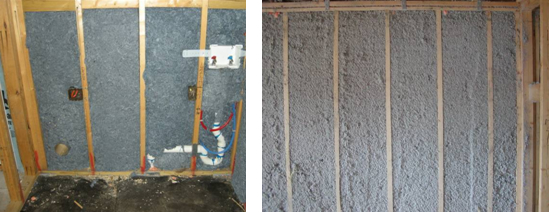Features of the Gulf Coast High Performance Affordable Demonstration Houses
Indoor Air Quality Features
- No atmospheric combustion heating or water heating equipment (therefore, no combustion safety measures required)
- Low radon potential (therefore, no mitigation system recommended)
- Indoor humidity and infiltration control strategies (estimated natural ach < 0.35)
- House wrap, air sealing, and insulation checklist and inspection (ENERGY STAR Thermal Bypass Checklist) Top plate and exterior wall penetrations sealed
- For frame floors: bottom plate and floor deck penetrations sealed
- Passive, positive pressure ventilation when Heat/AC operates
- Heating and cooling equipment right-sized with ACCA Manual J
- Kitchen and bath exhaust fans ducted to outside for humidity control
- Interior air handler closet (sealed and separated from attic and crawl space)
- R-13 wall insulation - dense pack cellulose or batt (fiberglass or recycled cotton) installed to meet RESNET Class I quality requirements
- Sill seal under bottom plate
- Can lights (when present) are rated for insulation contact and air tight (ICAT)
Durability* Features
- Air handler in conditioned space (less harsh environment than attic)
- Water heater located in attached storage room (less harsh environment than attic)
- Long life fiber cement siding
- Ship-lapped window and door flashing
- Kitchen and bath exhaust fans ducted to outside for humidity control
- 2’0” overhangs to direct water away from house
- Slab raised to promote drainage away from foundation
*Disaster resistance measures are addressed by prevailing local codes and are outside the scope of this Department of Energy activity.
Energy Efficiency Features (HERS Index ~70)
- R-30 blown cellulose attic insulation
- R-13 wall insulation meeting RESNET Class I requirements
- Low-E double pane windows
- At least 75% fluorescent lighting
- ENERGY STAR refrigerator (412 kWh/year) and ceiling fans (when present)
- High efficiency heat pump, (at least SEER 14, HSPF 8.5)
- Interior air handler closet (sealed and separated from attic and crawl space)
- Radiant barrier decking
- Sealed air distribution duct system (Qn,out = 0.03 or less)
- Light colored exterior finishes
- Insulated exterior doors with double pane lites

Thermal Bypass Inspection includes installing wall insulation to fill the stud bays with little or no compression
or gaps (meets RESNET Insulation Grade I.) Baton Rouge Habitat (left) works with challenging recycled cotton
batts which they carefully cut to fit around penetrations in this exterior wall. Mobile County Habitat (right)
achieves Grade I by insulating walls with blown in cellulose.

Interior air handler closet (left) protects heating and cooling equipment from extreme temperatures and
humidity levels and minimizes duct leakage into the return plenum. All joints and edges in the closet are
sealed (middle and right) to fully isolate the closet from the attic. Center picture shows outside air duct that
provides a small amount of ventilation air to the return plenum for conditioning. This ensures the house
operates at a slightly positive pressure – minimizing the potential for infiltration of hot humid air.
humidity levels and minimizes duct leakage into the return plenum. All joints and edges in the closet are
sealed (middle and right) to fully isolate the closet from the attic. Center picture shows outside air duct that
provides a small amount of ventilation air to the return plenum for conditioning. This ensures the house
operates at a slightly positive pressure – minimizing the potential for infiltration of hot humid air.
